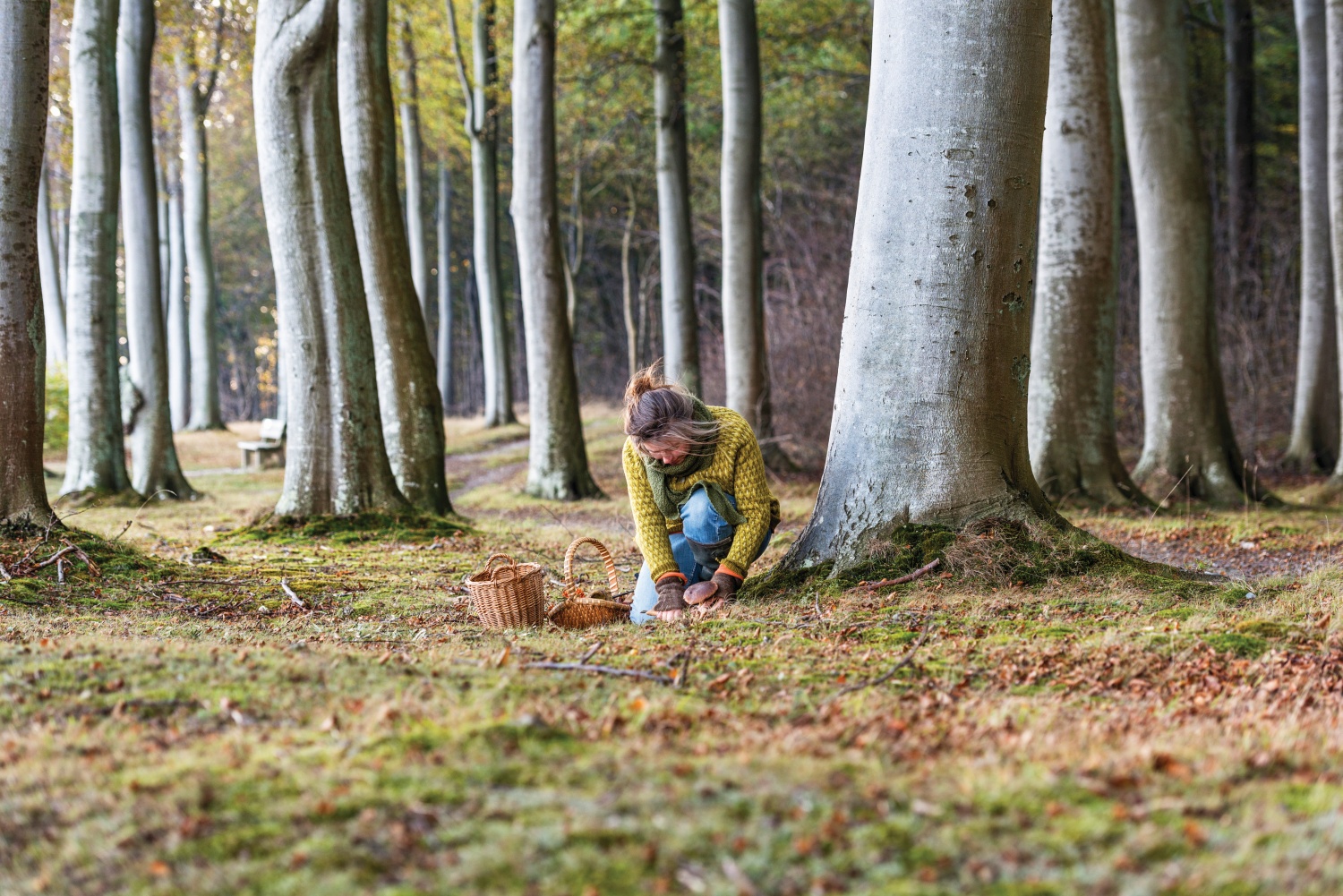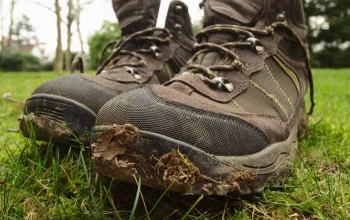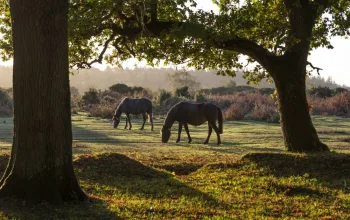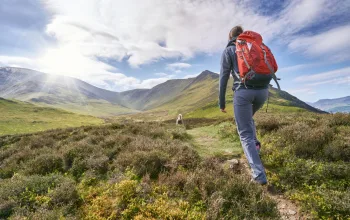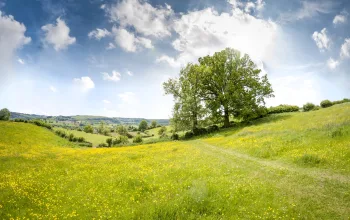The wonderful thing about foraging for wild plants is there is no specific location that you will find them. Be it in towns, parks, the open countryside or even your own back garden, wild plants really do get everywhere. I’ve found Morels, a highly sought after spring mushroom growing in the mulch at my local Tesco. Keep your eyes peeled and you never know what you might come across!
In terms of good places to begin a hunt, I tend to gravitate towards water courses – streams, lakes and rivers, which all make for excellent habitats for many wild foods. Keep an eye on the hedgerows too – all sorts of flowers, leaves, blossoms and fruit can be found lining our country lanes.
As with any crop, the plants you’ll find growing wild are a seasonal thing. But there are so many different stages that you can use a wild plant – some might be flowering, some will have run to seed, others will have leaves available all year round, and some with roots that are best picked after a couple of winter frosts. Here then are my top foraging finds in the hedgerows, forests and fields of Britain throughout the year…
The UK’s top foraging finds
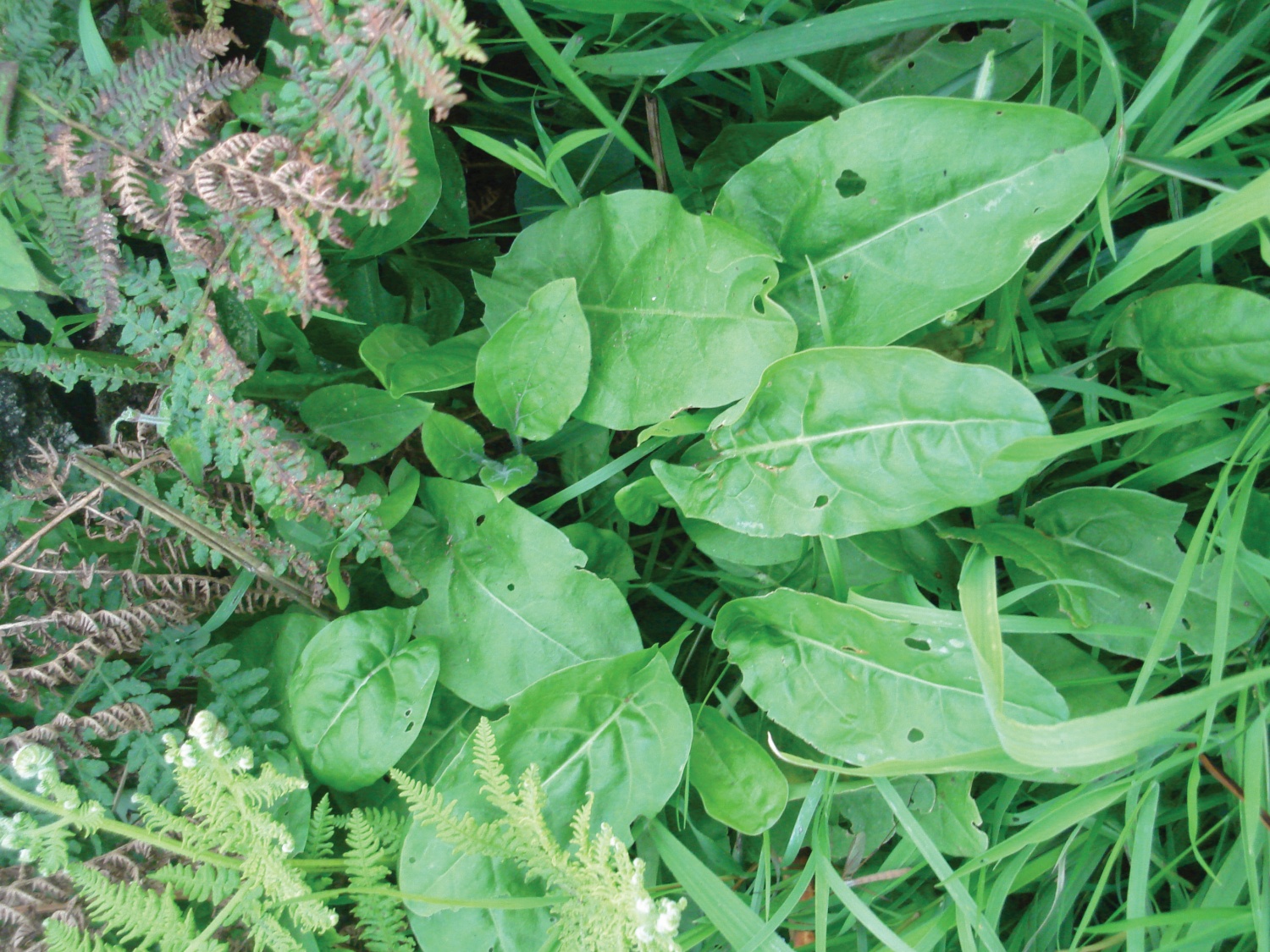
Sorrel is found on banks or in open fields, this shield shaped glossy leaf often has ‘rust’ spots on it. It has a sharp, citrusy, tangy flavour, that’s excellent raw, great with fish and cuts nicely through red meats. Don’t eat too much at once.
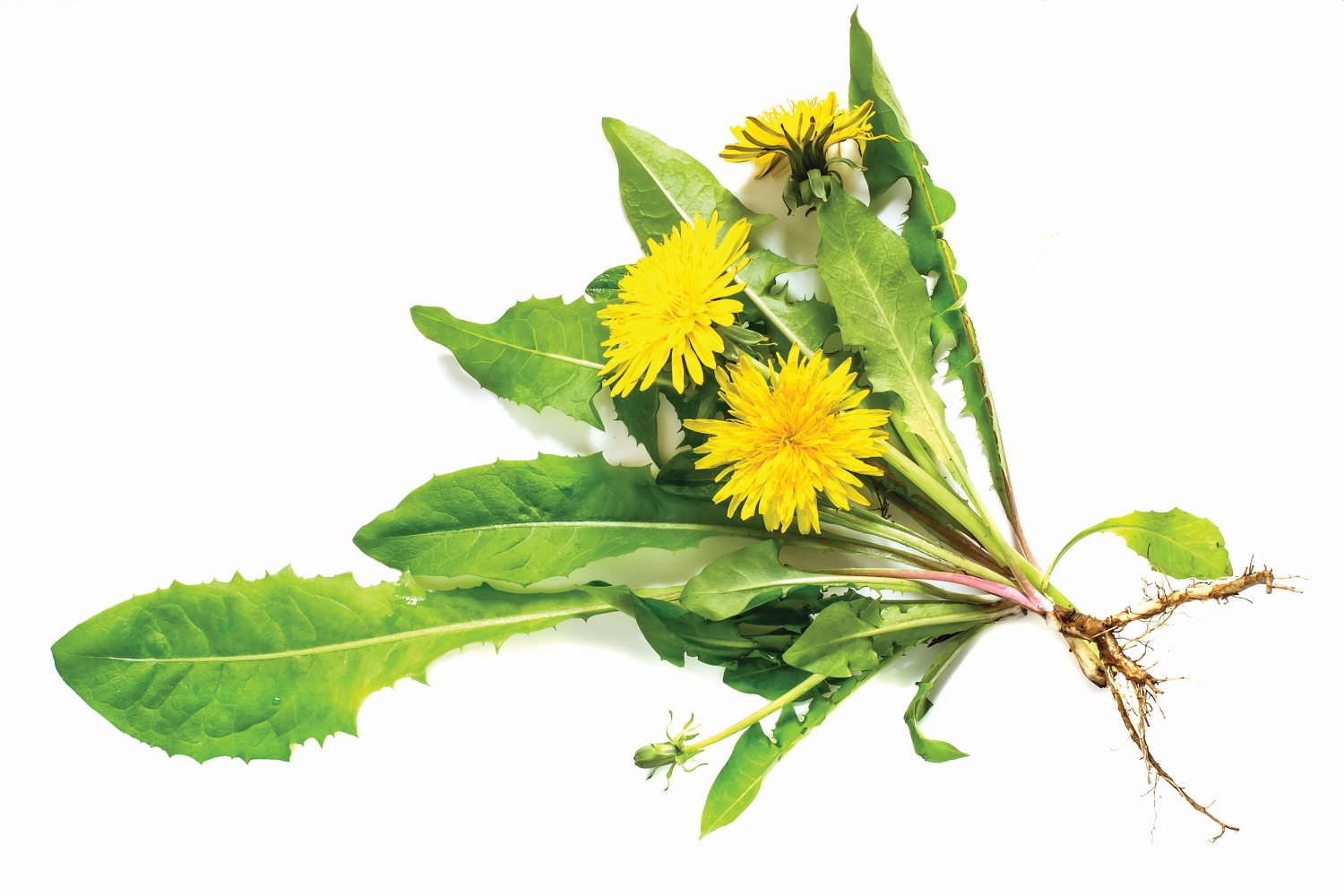
Dandelion is the first thing I foraged as a feral kid. Its leaf will go into any salad – the smaller ones being less bitter - and works particularly well in a Lyonnais. The flowers can be eaten raw, fried or breaded, and you can eat the roots too.
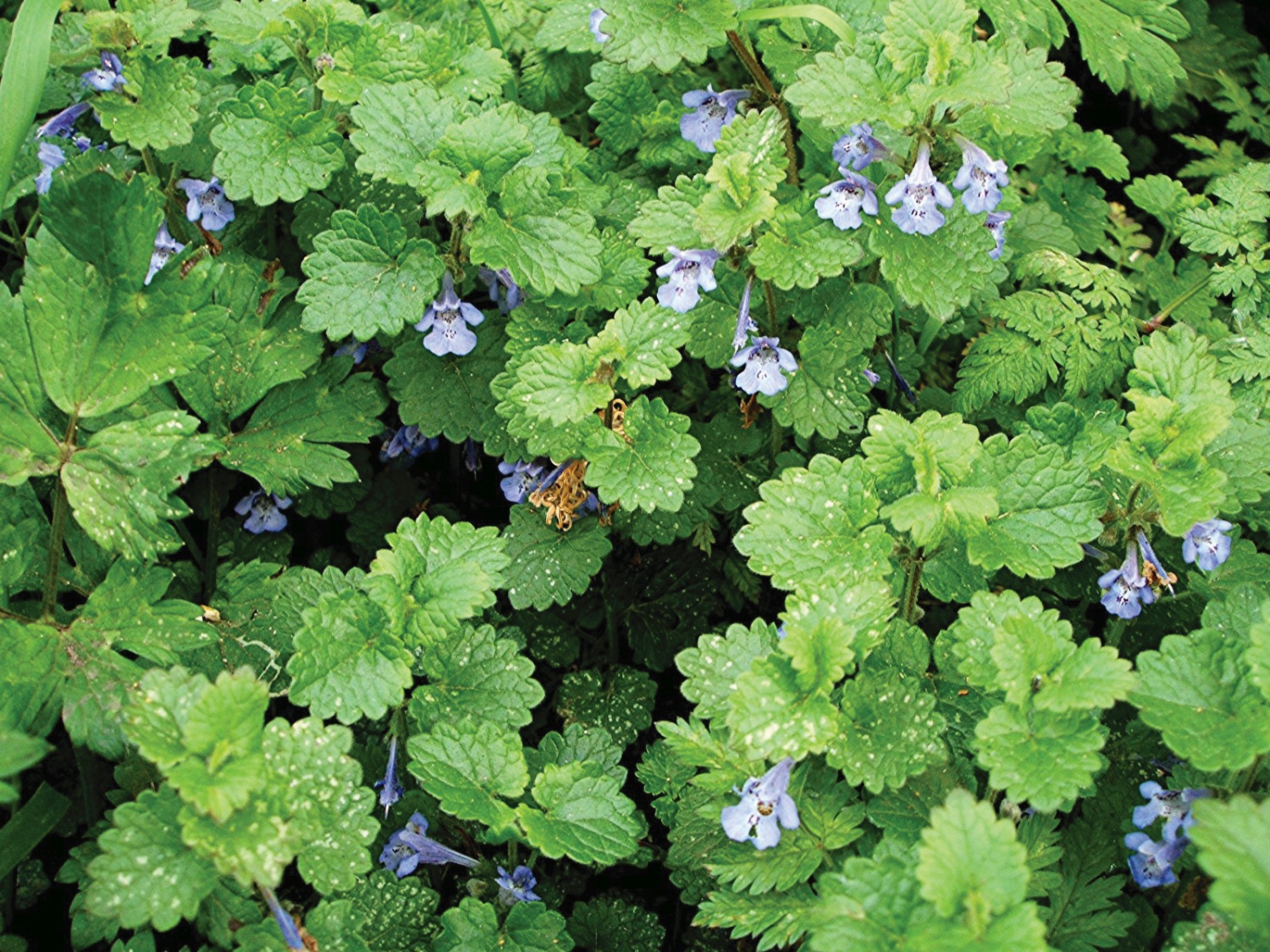
Ground ivy is our go to herb. It has tiny purple flowers that are great for garnish, leaves that are deep green and hoof shaped. It has notes of sage, rosemary, mint and thyme. Use it as you would a sprig of rosemary.
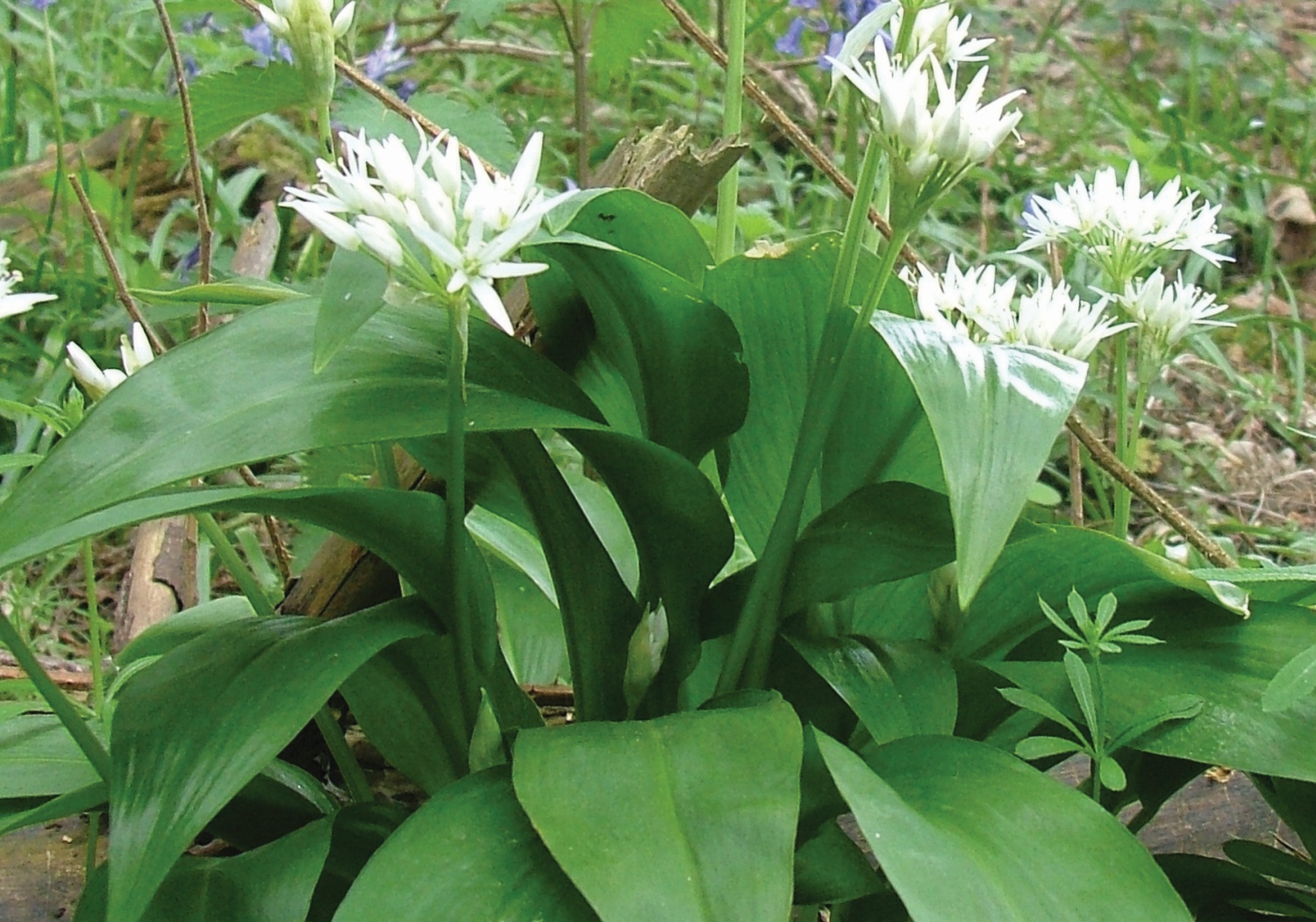
Wild garlic is found in woodlands and verges in spring, but after that the seed heads are good pickled. The leaves are great, as they present garlic flavouring in a different form to a bulb. Use sparingly, as it is punchy!
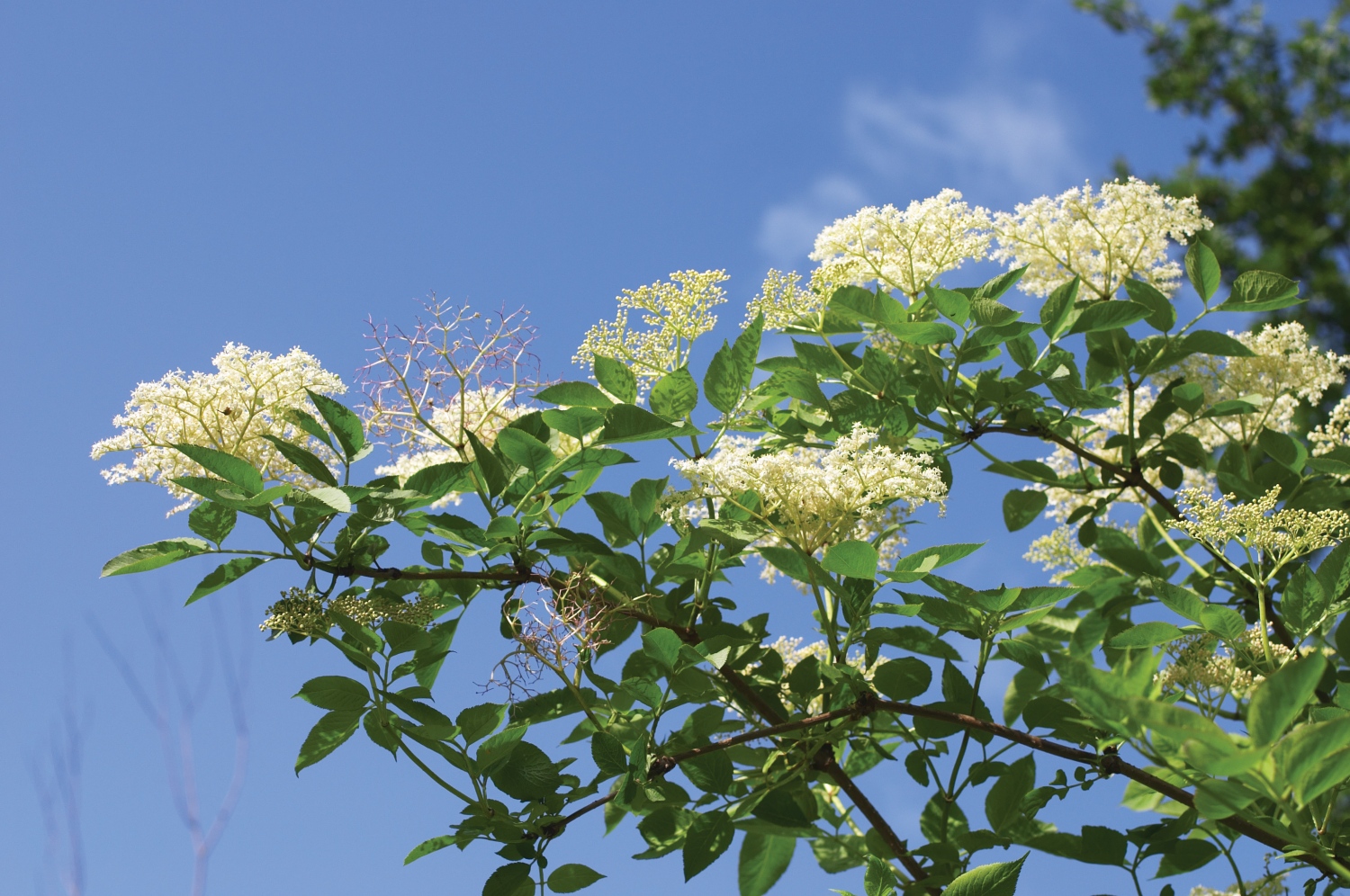
Elderflower has bursts of fragrant spring flowers, which are mainly used for cordial making, syrups or infusing directly into spirits. Pick it in the morning in full sun, as the pollen is where all the flavour is.
Meadowsweet has creamy white ‘candy floss’ style flower heads with a sweet vanilla essence. It makes excellent cordial, spirit infusions and syrups. This is the plant that gave us aspirin – so it’s a good natural pain-killer.
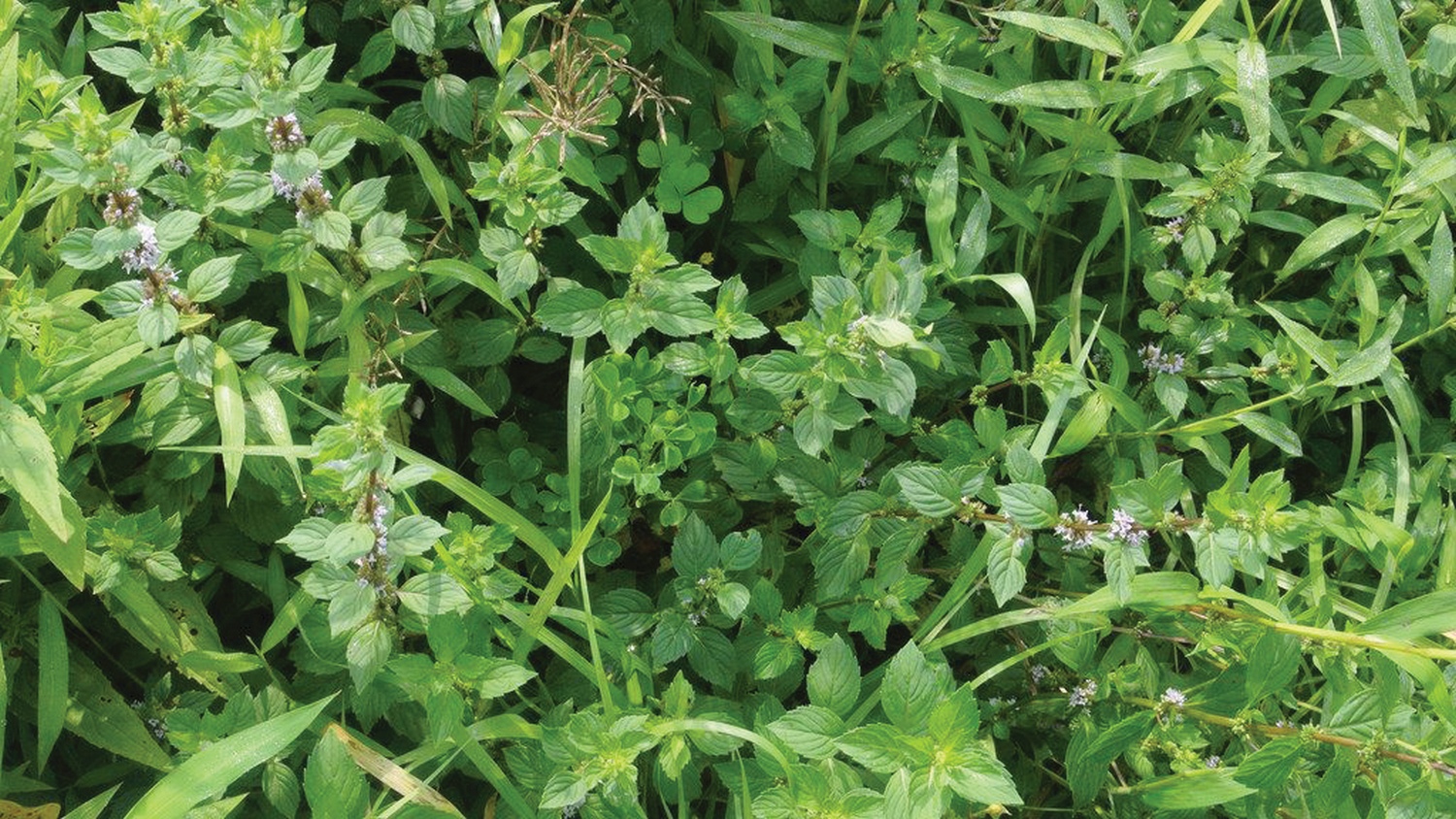
Wild mint is always found in damp areas. We have four dominant mints found in the UK with lots of crossbreeds: water mint, spear mint, peppermint and apple mint. If it looks like mint and smells like mint, then it’s probably mint. It’s best picked in summer, when the flavour will peak just before it starts to flower.
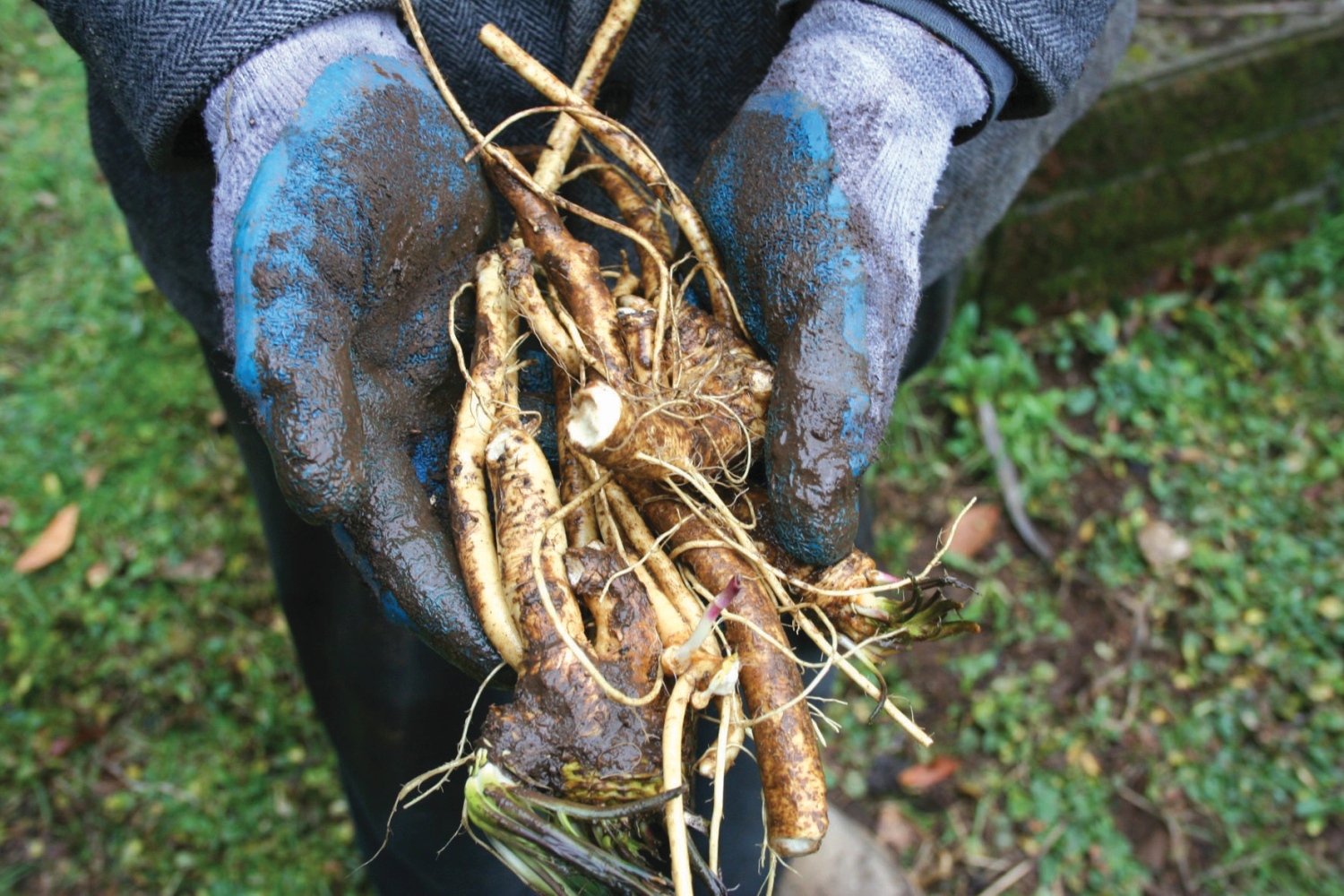
Wild horseradish is one of my favourites. It’s often found on roadside verges. Look for large ‘donkey ear’ leaves, with wavy edges, similar to dock leaves. Dig the roots up and you can use them as a punchy garnish - but beware, just like regular horseradish, they are extremely hot.
Foraging Dos and Don’ts
Some laws and pointers that will keep you out of harm’s way when foraging:
DON’T ever eat anything unless you are 100 percent sure of what it is. Any doubt, leave it out. We have some seriously poisonous and very common wild plants in the UK, such as Hemlock Water Dropwort, that can be lethal.
DO be particularly careful with mushrooms. Unless you really know what you’re looking at, leave well alone.
DON’T uproot any wild plant without the landowner’s permission. The Wildlife and Countryside Act of 1981 actually makes it illegal. Things you are allowed to take without permission include fruit, flowers, foliage and fungi.
DO check you are not walking in a Site of Special Scientific Interest (SSSI) or environmentally protected area, as they will not allow you to forage for anything.
DO consider the plant itself, from a sustainability point of view – only take what you need and never strip a plant of all its leaves, flowers or berries. Taking a few off here and there is fine though.
- READ NEXT: The Ultimate Mountain Retreats
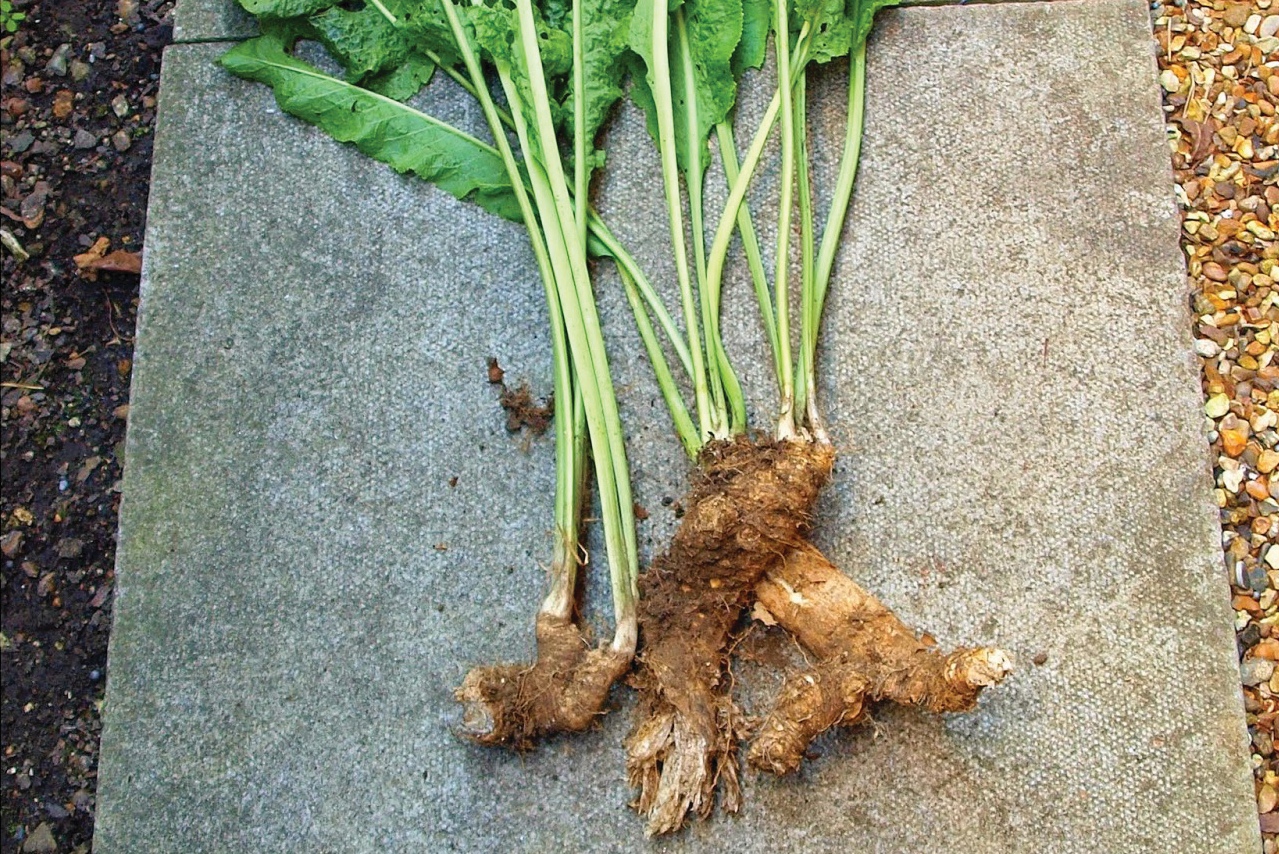
Top tips for wild cooking
It is a myth that you can’t take a fully foraged meal and make it taste good. Fully-fledged flavour pairing is a different matter however, which is why there are always going to be some basic flavouring ingredients that are worth taking out in the field with you, to make cooking in the outdoors more enjoyable (and tasty!) Every keen cook has their own seasoning preferences, but for my tastes, here are some that I would recommend:
Olive oil, cider vinegar, salt, pepper, beef, chicken and veg stock cubes, cumin, coriander seed, nigella seeds, sesame seeds, chilli flakes, herbes de provence, curry powder, rice, limes, lemons, garlic.
But if you can only take one ingredient for adding flavour into your cooking in the wild, don’t leave out the butter – everything tastes better with butter.
Be practical though: don’t make the mistake of carrying a whole bottle of Olive oil on an overnight camping trip for example. Downsize wherever possible for each trip. Muji and Boots both do a great line in ‘travel’ bottles, soap boxes and vitamin boxes. These are all excellent for storing oils, vinegars and herbs and spices. Even Tic Tac boxes are useful for this too.
Three Wild Recipes
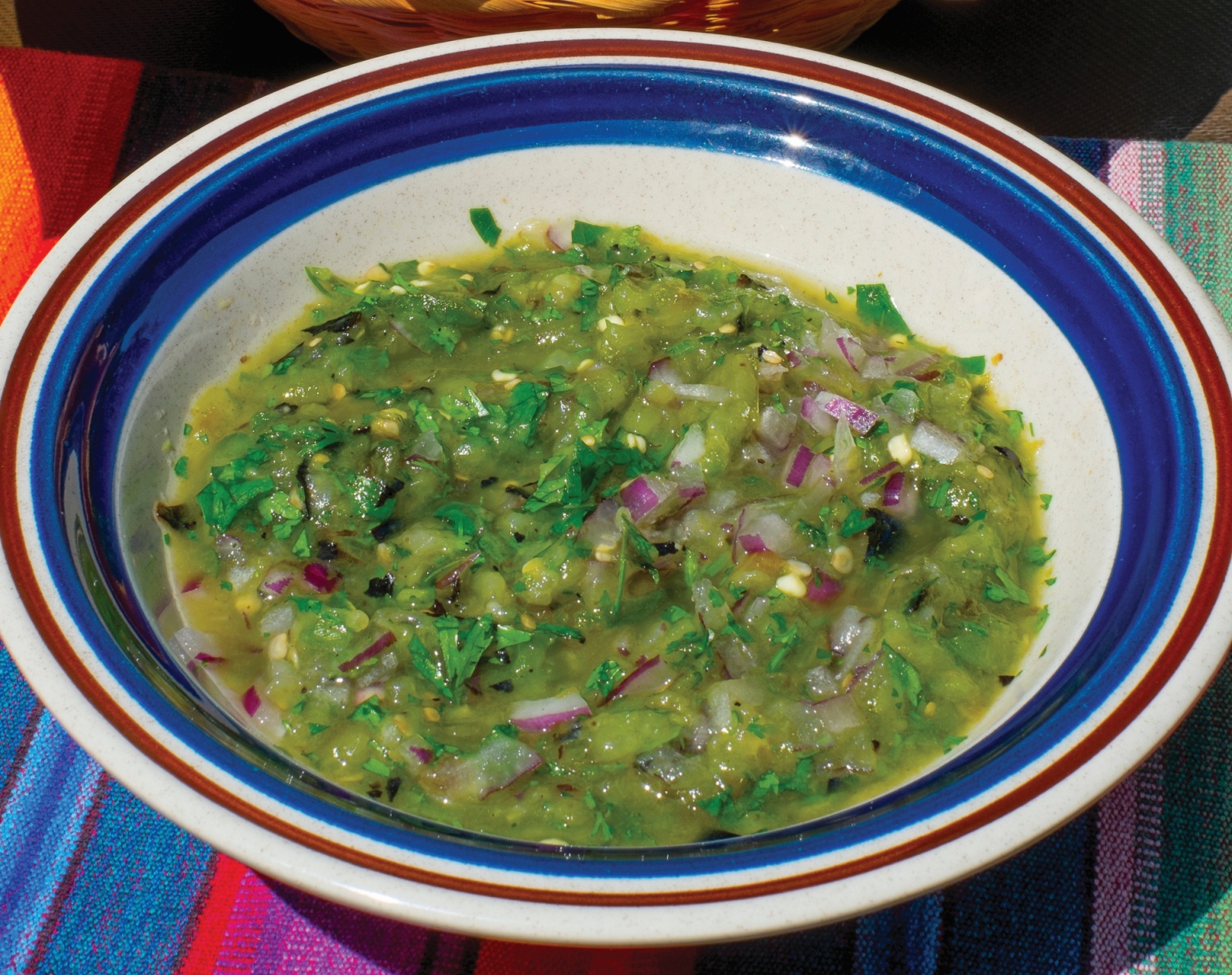
Salsa Verde
Salsa Verde is a piquant sauce, green in colour which is designed to accompany meat or fish. It also works well with potatoes. In fact it is so good, I’ve even had it on toast.
Preparation
Take the time to chop the ingredients you’ve gathered up and mix them by hand – the consistency will be much better than blending and the colour darker. You shouldn’t need to add any salt, as the anchovies will take care of that for you.
Ingredients
1 handful of ground ivy,
1 handful of sorrel,
1 handful of three-cornered leek,
1 handful of Alexanders,
2 TBSP red wine vinegar,
6 TBSP olive oil,
4 Anchovies,
a few strong twists of black pepper,
the zest of 1 lemon,
1 TBSP of Dijon mustard.
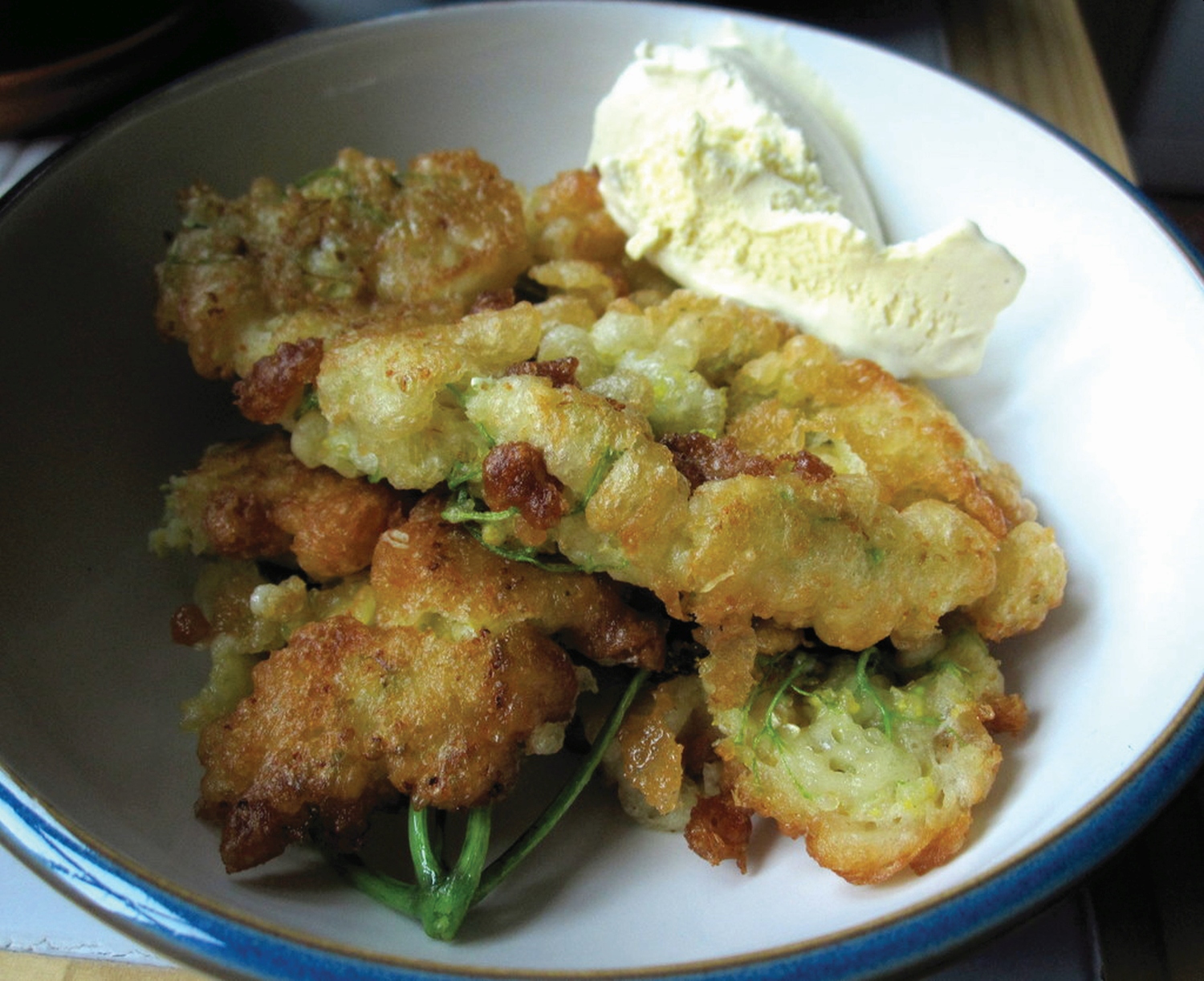
Elderflower Fritters
An easy recipe, this consists of making a batter, heating up some vegetable oil, dipping elderflowers in batter and chucking them in the oil til golden. Done.
Cooking
Heat up 500ml of vegetable oil in a small saucepan. Dip the flower heads in the batter and twirl the stalk to remove excess batter. Drop into oil and remove when golden with a fork onto a plate topped with kitchen towel. Douse with caster sugar and a dash of cinnamon. Eat.
Ingredients
Elderflowers,
4oz plain flour,
1 egg,
½ pint of milk,
a pinch of salt,
½ tsp of vanilla essence.
Sift the flour and salt and make a well in the centre to drop in the beaten egg. Mix it, then slowly add the milk, and whisk until smooth. Add vanilla essence at the end.
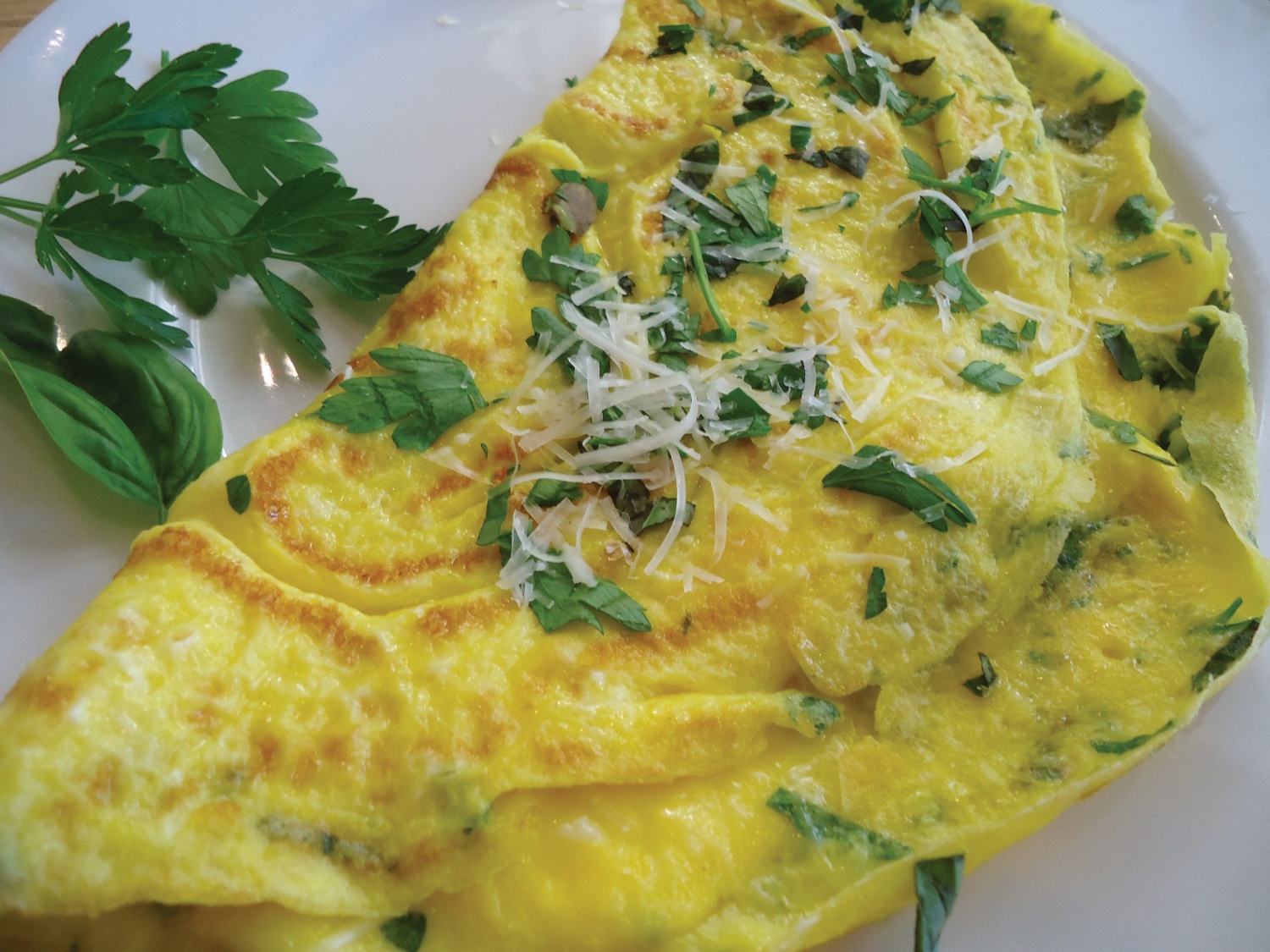
Wild herb omelette
Making an omelette is a fuss-free way of combining and cooking energy-packed eggs with ingredients from the natural larder, such as sorrel, wild garlic and dandelion.
Cooking
Grill the bacon until crispy, then remove from heat. Preheat a frying pan with a little oil. Crack and whisk eggs in bowl with herbs and seasoning, pour into frying pan. Stir gently. When it starts to set, scatter cheese on top. Cook until nearly set. Garnish with the bacon and foraged herbs.
Ingredients
10 free-range eggs,
100 ml wild herbs such as sorrel,
a handful of wild garlic,
some dandelion,
a good sprinkling of salt & pepper,
8 slices of good quality bacon,
2-3 table spoons of olive oil
50g of cheddar cheese.
- READ NEXT: Wild Norway and the art of Restoration


